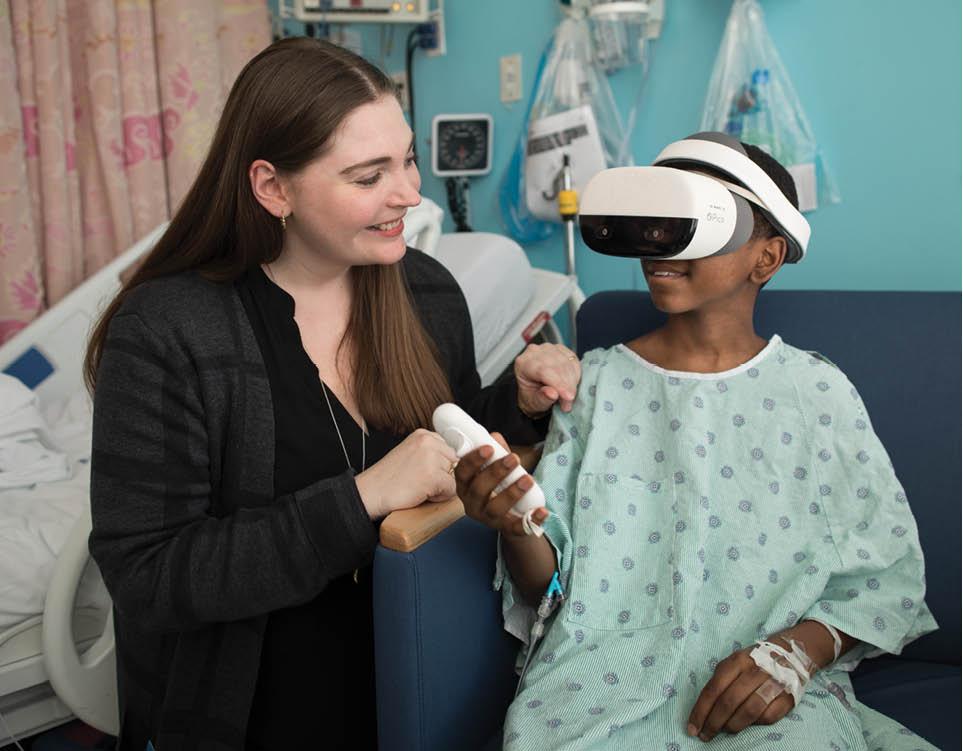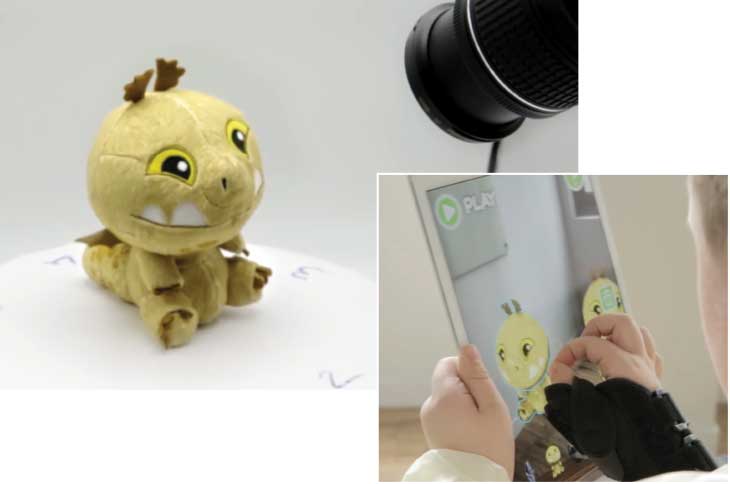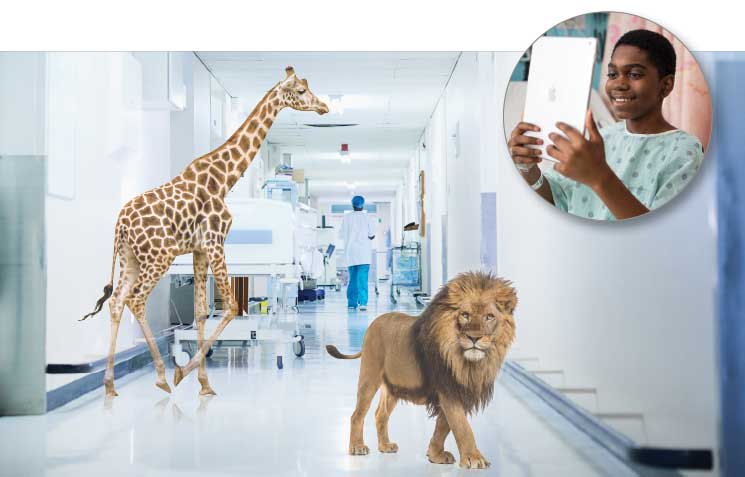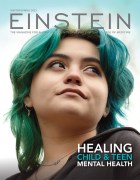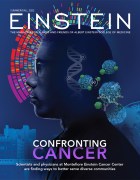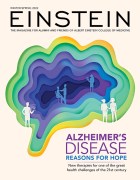Pediatric Patients Use Virtual Reality to Find Real Comfort
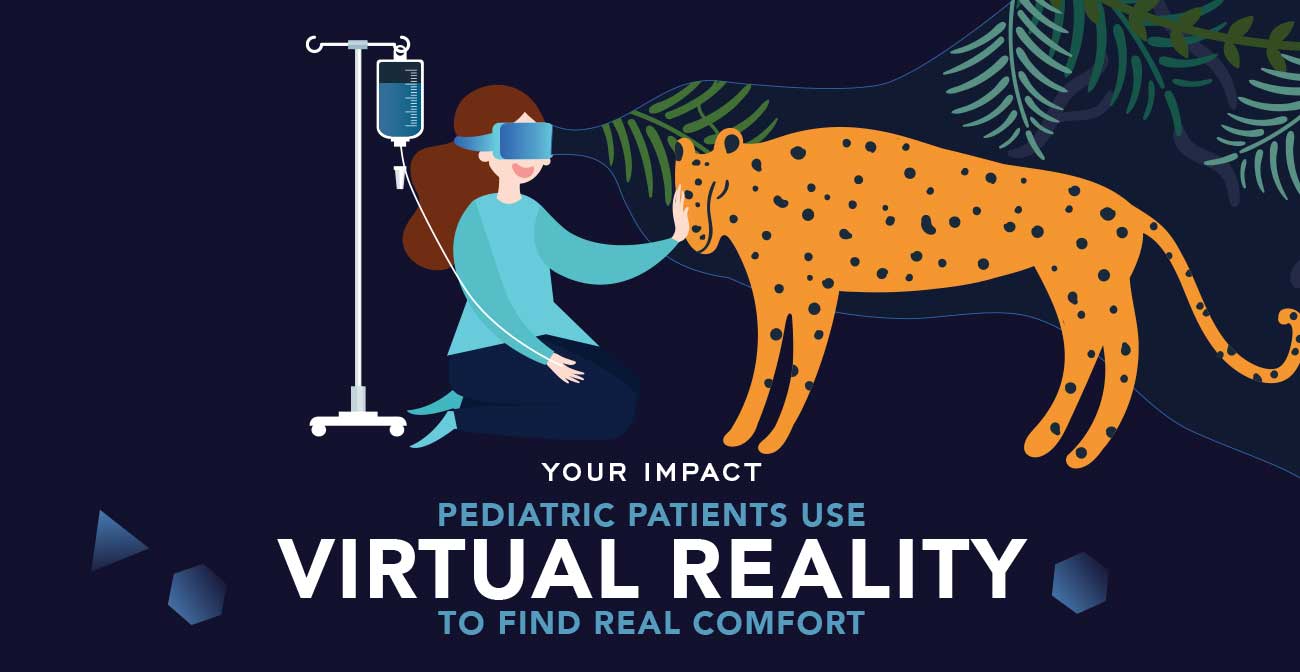
On some days she hikes deep into the forest, climbing past rushing waterfalls on a carpet of yellow wildflowers as birds chirp overhead. On others she plunges into the ocean, swimming through orange and blue fish as a playful seal tries to get her attention. Chiara Valle, 20, looks forward to these outings—all of them in the Bronx, just down the hall from her hospital room.
Immersing themselves in another space through computer-generated images helps hospitalized children deal with months of treatment.
Creating a Magical World
The CHILZone’s director, Olivia Davis, who manages the Fine Art Program and Collection at Montefiore and Einstein, wanted to bring art into the hospital that would engage young people. But initially she was stymied by a space that was cluttered with medical equipment and TVs. Then inspiration struck: “I noticed that people were always on their cell phones or iPads,” she says. “I thought we should meld these worlds in a way that makes sense for healthcare.”
Together with Jodi Moise, director of the Fine Art Program and Collection, Davis came up with a plan that would use the joy and energy of well-known Bronx landmarks. “The majority of
digital-media programs—even those aimed at healthcare—are violent or employ generic relaxation techniques,” Ms. Davis says. “Through the CHILZone, we wanted to produce experiences both familiar and thrilling.”
She started by commissioning Tom Christopher, an artist known for his expressionist paintings of New York City, to create virtual paintings of the Bronx’s Grand Concourse at Fordham Road and the Holiday Train Show at the New York Botanical Garden. “We wanted to use spaces that celebrate the community that the children live in,” Ms. Davis says. “It’s a magical world they can walk around or fly over.”
Achieving that vision has required a huge team of collaborators, Ms. Davis says. “There’s a synergy that happens when you bring together diverse talents—information technologists, care teams, clinicians, and therapists at Montefiore and Einstein as well as industry-leading technology consultants, people from academic institutions, and programmers,” she says.
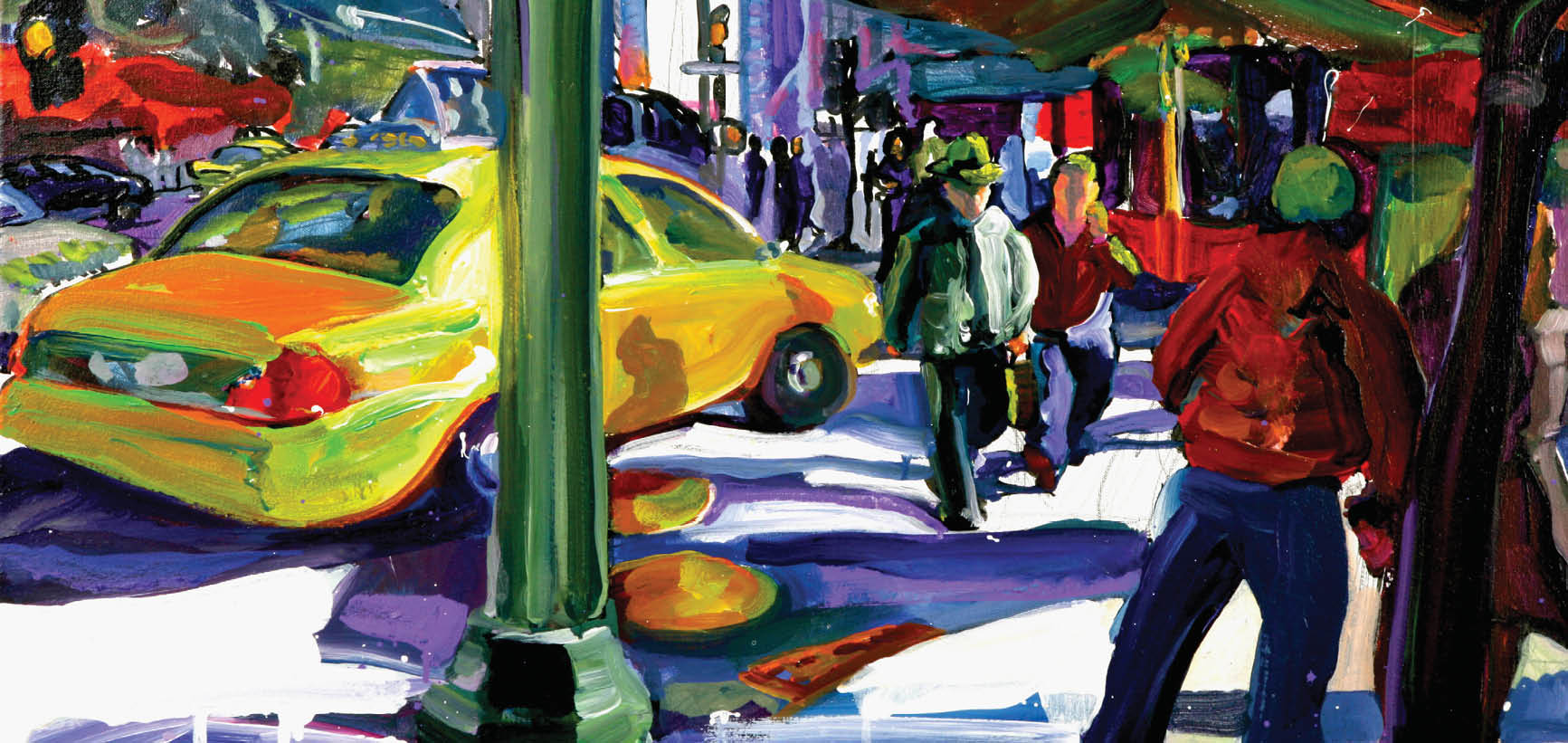
We wanted to use spaces that celebrate the community that the children live in. It’s a magical world they can walk around or fly over. — Olivia Davis
Digital-Research Support
When David and Arlene Gaynes first heard about the CHILZone, they knew it fit well with their philanthropic vision. The family supports a variety of activities at local hospitals through Chillin’ With Adam: The Adam Gaynes Foundation, named in honor of their son, who died of a brain tumor at age 11. The foundation enriches the lives of families with sick kids, providing assistance ranging from occupational therapy to family days at a local amusement park.
“We know firsthand how difficult it is for children and their families to spend time in the hospital undergoing treatments for a life-threatening disease,” Mr. Gaynes says. He and his wife were drawn to the CHILZone because of AR’s therapeutic potential and VR’s ability to reduce children’s suffering. “Montefiore and Einstein are really at the leading edge with this technology,” he says. “It struck us as something that could have a tremendous impact.”
Mr. Gaynes supports clinical research based on the innovative VR programs at Montefiore. He helped the CHILZone enter a contest run by the NEX Group, a financial-technology firm. After reviewing 19 entries, NEX narrowed the competition to six, and the CHILZone took home the top prize of $150,000. That award paid for the staff and equipment for two clinical trials, for which data collection has begun.
“We want to see how different virtual-reality experiences help children at different ages and with different diagnoses,” Dr. Loeb says.
“We know firsthand how difficult it is for children and their families to spend time in the hospital undergoing treatments for a life-threatening disease.” — David Gaynes
When Chiara looks ahead, she focuses on adventures “IRL”—in real life. But for now, she’s grateful to slip on the VR goggles and transport herself out of CHAM’s infusion room to another world. “The VR experiences help to ease the nausea I get from my treatments,” she says. “They put me at peace.”
The Issue at a Glance
Highlights
Collegial Life
- Dr. Chinazo Cunningham to Advise CDC on Opioids
- Dr. Susan Band Horwitz Wins ‘Canada’s Nobel’
- Einstein Achieves Independent Degree-Granting Authority
- Dr. Margaret Kielian Awarded the Horwitz Prize
- Einstein Editions: Making Sense of Bladder Cancer
- Einstein Editions: A Helpful Tool for Battling the Blues
Research Notes
- Einstein Researchers Contribute to Promising Ebola Treatment
- Immunotherapy Combats Metastatic Lung Cancer
- Novel Combination Therapy Speeds Wound Healing
- Preventing Harmful Cell Death
- Depression Linked to Poor Diabetes Self-Management
- Lab Chat With Dr. Keisuke Ito
- 3 Major Grants to Fight Colorectal Cancer
- Major NIH Research Awards

